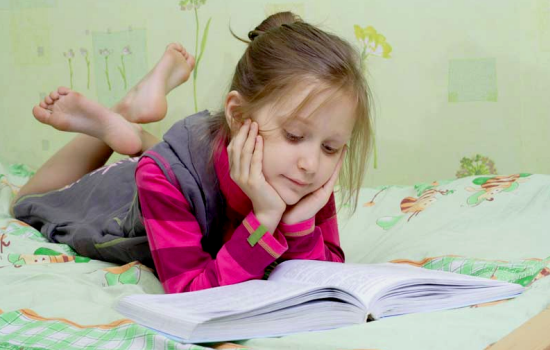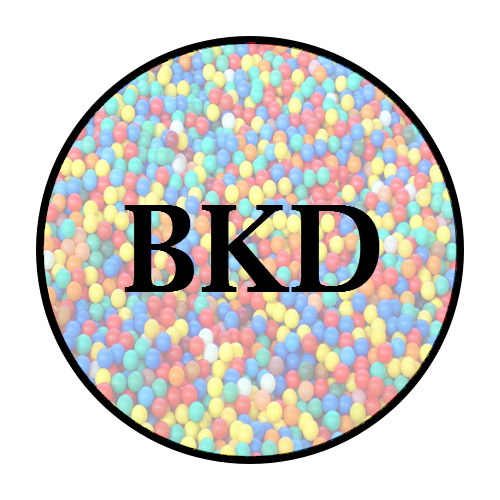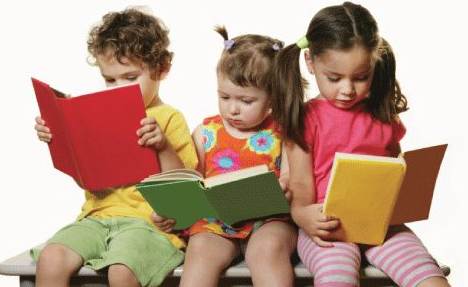You are your child’s first teacher. Your toddler’s brain is waiting for learning opportunities and adventures. Incorporating the teaching of reading with multiple fun activities at an early age provide your child with opportunities for maximum growth.
Why Is It Important to Teach Kids to Read Early?
Physiological Reasons
Dr. Richard Gentry’s excerpt from, Raising Confident Readers, in Psychology Today, emphasizes that during toddlerhood, the brain wants to learn. A baby’s brain triples in size during the first year of life. Reading aloud and talking to your baby enables neural pathways to develop. As early as 3 or 4 months, the brain is at its peak for synaptic formations. This is a prime time for stimulating and reinforcing neural pathways that link visual cues, sounds, and meanings. This helps to develop right-brain creativity and skills for reading. By giving your baby opportunities to listen, view, touch, and use movement activities, you ignite the creative and verbal sides of the brain. Learning to read as a toddler is much easier than learning to read at age 6 in school. When a child starts learning to read as a toddler, it reduces the psychological pressure of a formal classroom setting. Learning from formal instruction is hard work. Learning to read as a toddler is easier with informal reading activities during a critical period of brain development.
Developmental Milestones
According to “3-4 Year-Olds: Developmental Milestones” on the WebMD website, there are cognitive milestones that indicate a growth in literacy development. You observe a distinct correlation between these milestones and reading skills. At this age, toddlers exhibit a vocabulary of 250-500 words. Their language skills allow them to speak five to six words in a sentence. Toddlers tell stories. Also, your child asks lots of questions. “Why is the sky blue? Why do birds fly?” Asking questions provides the perfect opportunity to research the answer in a book. An important indicator that your child is ready to read is that your 3- to 4-year-old remembers parts of a story. Also, during this time period, your child is able to recognize and write some letters of the alphabet. When you look at these indicators, you know that your child is ready to begin the pathway to independent reading and learning.
Prepares for Success in School
Children, who read early, experience more exposure to written words. They recognize more words by sight. The sooner children learn to read, the more books, knowledge, and ideas they acquire. This results in language skills that form a richer vocabulary and an increase in oral communication. Children with a richer vocabulary perform better in school, especially during the early years.
Builds Self-Confidence
A child, who learns to read at an early age, grows in self-confidence and independence. Reading promotes a feeling of accomplishment and more maturity. It increases a feeling of pride and often a willingness to help others.
Five Tips for Parents to Use to Teach Toddlers to Read
It is not necessary for you to be a formally educated teacher in order to teach your toddler. You do not need to spend exorbitant amounts of money. You are probably already providing reading instruction without even being aware of it. Many interactions that produce learning occur naturally. You may wish to adjust some activities and add some more to your educational repertoire to enhance your toddler’s learning experience.
1. Read-alouds
It is never too early to begin read-alouds. Begin with your infant a few days after arriving home. Reading to your infant is a wonderful bonding experience. An announcement in 2014 by The American Academy of Pediatrics advises parents to regularly read aloud to children from infancy through at least age 5. Reading aloud stimulates brain development, continues to support a bonding relationship, and helps build language and literacy skills at a critical time.
Following are some tips for read-alouds and book choices at various ages during toddlerhood:
- Birth-One Year Olds: Babies are content to hear your soothing voice. Rhyming books provide a sing-song mood. In a few months, your infant is ready to explore and interact with books. Now, it is time for tough board books, cloth books, and vinyl books. At this age, babies love to chew books. Choose books with bright illustrations. At this point, the focus is for the infant to realize that books are fun.
- One-Three Year Olds: Let this be a time of fun interaction and word play. It is time to introduce your toddler to pop-up books, lift-the-flap books, and touch-and-feel books. Reading becomes a time of exploration. Continue to use rhyming books. This introduces word families and phonics.
- Three-Five Year Olds: Use alphabet books, picture books about favorite childhood characters, and short stories. The alphabet books teach letter and sound correlations. Also, it is time to address comprehension skills. Ask your child questions about a story as you are reading. This is providing a time of interaction between child and parent and reinforcing comprehension skills.
In addition, you show the fun and importance of reading by being a model. Your toddler needs to see you read. Keep books easily accessible for your toddler. Visit a library and a bookstore. Your toddler realizes that books are useful and special.

2. Learning the Alphabet
As adults, it appears that we innately know that a toddler needs to learn the English alphabet. That must be why we automatically sing The ABC Song to a toddler. The letters in the alphabet are the building blocks of our English language. In order to become a reader, a child needs to be able to recognize each letter, and the sound associated with that letter. When mastery of the letters and sounds occur, your child is ready for reading. It is best if a child begins to learn the alphabet at least by age 3. Learning the alphabet is a praise-worthy accomplishment for the child and parents.
Make learning the alphabet fun. It is important to teach slowly and not overwhelm a toddler with all 26 letters at once. Work with just a few letters at a time. It is especially important for a toddler to experience the letters in a variety of ways. Remember that toddlers learn by using all of their senses. These ideas are kid tested and parent approved:
- Sing The ABC Song everyday.
- Allow your toddler to enjoy play dough, and use it to form letters.
- Purchase magnetic letters and a cookie sheet. This allows your toddler to feel the shapes of the letters.
- Encourage your toddler to look for letters everywhere you go.
- Refer to this website (teach mama.com/10 fun ways of helping kids learn the abc’s) for additional hands-on activities.
- Use your phone and tablet as for practice sessions. Use apps with positive reviews from independent sites such as: https://www.commonsensemedia.org/lists/alphabet-apps, http://www.bestappsforkids.com, and www.youtube.com. YouTube provides an actual video preview of apps.
- After an introduction to the alphabet, begin to transition your toddler to early reading practice by using Mario’s Alphabet App. It is an award winning app. The developers program uses the inspirations of Maria Montessori. Mario’s Alphabet App introduces letters, corresponding sounds, and words that begin with that letter. This app encourages toddlers to link letters with the sounds they make. It helps toddlers see how letters and sounds are linked to words.
- Read and make alphabet books.
The most important teaching tips for teaching the alphabet are: make it fun, take it slowly, do not stress, and love the time that you work with your toddler. There is a multitude of free ideas and activities on the internet to use to teach the alphabet. As your toddler learns letters, expect to be bombarded with your child pointing out letters everywhere you go.
3. Reading Around the Room
For reading around the room, toddlers use special pointers, such as a wand or an animal shaped flyswatter, to read words that are posted around the room. These words are labels of the objects in the room. Repetition of this activity is important. It is a good idea to have the child’s name posted somewhere in the room. Have books available, so your child is given the opportunity to read familiar titles. Toddlers also like to go on a read the room letter hunt. They search for all the Mm’s, or other specific letters that they can find. When toddlers read around the room, they are learning to: track print and make one to one correspondences, distinguish between letters and words, and recognize that print has meaning.

4. Word Families
Using word families helps teach beginning readers that words contain and share patterns. Word families are like a list of rhyming words. They help toddlers recognize patterns and predict word sounds for decoding. Using word family charts or books build phonemic awareness. This is a valuable asset for reading success. Toddlers begin to see how words look alike at the end and if they sound alike at the end. They begin to see that one little chunk unlocks the ability to read lots of words. When your child begins to read, you are able to incorporate word families by:
- Read aloud rhyming books. Allow your toddler to complete lines in the book by providing the rhyming word. Dr. Seuss books are excellent choices for this. Chicka Chicka Boom Boom by Bill Martin discusses the alphabet in a fun and rhyming way.
- Sing rhyming songs. It’s-Bitsy Spider is a classic. YouTube is a great resource for locating songs for preschoolers that emphasize rhyme.
- Read nursery rhymes aloud.
- Make a treasure box of rhyming words. Write pairs of words that rhyme on notecards. Store them in a box for later use.
- Make word family charts following a specific pattern. Meet the “an” family. List words like; fan, man, can, tan in a vertical line. Your child needs to see the letters that stay the same and the ones that change.
Do a little practice each day. Make it fun. Use silly words that rhyme. You get to experience the joy of teaching as your child laughs.

5. Sight Words
Sight words are the words that are most frequently used and repeated in books. An important aspect of reading is being able to instantly recognize sight words. These words require a child to basically memorize them. Sight words do not follow patterns. Usually, the child can not use a picture as a clue. The letters and sound connections do not match. Use the word, “new” as an example. It is impossible to sound out this word letter by letter. The young reader relies on memory to read this word. Sight word lists are on the Dolch List of Basic Sight Words and Fry’s 300 Instant Sight Words. The Literacy and Information Communication System website provides a downloadable list. 50-75% of all words in reading selections for preschoolers to third graders are in the Dolch Basic Sight Wordlist of 220 words.
Your preschooler does not need to memorize hundreds of words. Each grade level has specific sight words. You need to focus on the sight words for a preschooler or kindergarten student. This reduces the list to 40-52 words. This is a much more manageable amount of words to learn. It is important to include words that the child sees often, such as his name: the names of siblings, pets, or friends, street names, and signs. There are several activities that help toddlers learn sight words such as:
- When you are reading aloud to your child, be sure to point sight words out any time you come across one. Highlight the word with your preschooler.
- Play a memory game with 6-8 sight words.Write each sight word on two index cards. Lay the cards facedown. Have your preschooler match the words. At first, matching is primarily through letter recognition, but with practice your child identifies sight words independently.
- Have some messy and sweet fun by spraying cream on a cookie sheet. Your child writes a few sight words in the cream. By having your preschooler feel how the words are formed, it becomes easier to recognize the words.
- Drill with flash cards. Memorization takes practice.
Repetition is the key for developing a sight word vocabulary. Previously taught words need reviewing on a daily basis. Begin by selecting specific sight words and gradually add new ones as appropriate. Do not rush the process.
Another educational source to consider is the reading program, ABCmouse.com, because it addresses the essential elements of reading. Helping your toddler learn to read is one of the most influential things that you do to help your child succeed. Especially for a toddler, do not totally rely on apps and technological activities. Interactions with you provide the best learning opportunities.
Good luck, have fun and persevere, it’s all worth it 🙂


